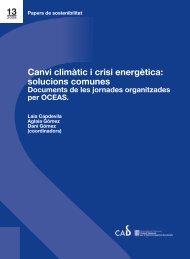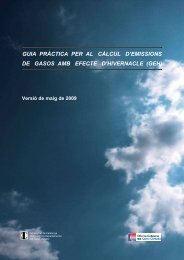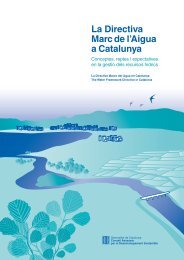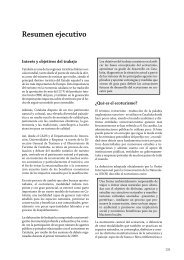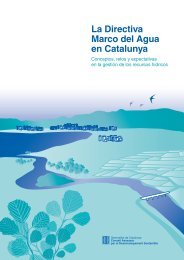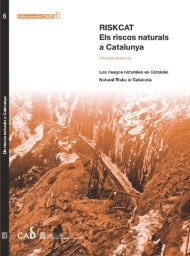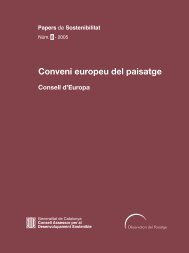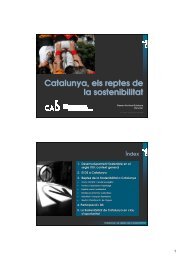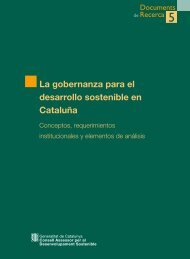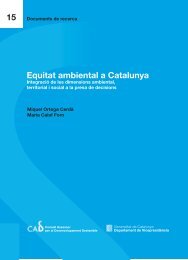Estratègies per al desenvolupament sostenible - Generalitat de ...
Estratègies per al desenvolupament sostenible - Generalitat de ...
Estratègies per al desenvolupament sostenible - Generalitat de ...
You also want an ePaper? Increase the reach of your titles
YUMPU automatically turns print PDFs into web optimized ePapers that Google loves.
The framework is gener<strong>al</strong>ly accepted, and many countries find it useful forstate of environment reporting. Core lists of environment<strong>al</strong> issues –and ofrelevant pressure–state–response indicators– have been, and are being,<strong>de</strong>veloped by sever<strong>al</strong> organizations to do this, building on initi<strong>al</strong> work by theOECD. It<strong>al</strong>y, for example, publishes a nation<strong>al</strong> state of the environment reportusing this framework every two years, and is setting up a nation<strong>al</strong> monitoringsystem <strong>al</strong>ong the same lines.The European Environment Agency, following a propos<strong>al</strong> from Denmark,expands the approach further to a “driving forces – pressures – state – impacts– response” mo<strong>de</strong>l for its state of environment reports, because it <strong>al</strong>so invitesassessment of the a<strong>de</strong>quacy of policy responses to pressures on natur<strong>al</strong>resources 17 .The pressure–state–response framework works well for such environment<strong>al</strong>assessments (for which it was <strong>de</strong>signed). However, it is less well suited tosustainability assessment because it treats human aspirations and activitiesmerely as environment<strong>al</strong> problems. Although the CSD tried to get round thisby changing pressures to ‘driving forces’, users found it increasingly hard todisentangle states, driving forces and responses (eg responses are oftendriving forces). It was <strong>al</strong>so cumbersome to i<strong>de</strong>ntify an indicator for each state,driving force and response.18217 B<strong>al</strong>dock, D (1999), “Developing and Using Agri-environment<strong>al</strong> Indicators for Policy Purposes: OECDCountry Ex<strong>per</strong>iences”, Environment<strong>al</strong> Indicators for Agriculture, vol. 2, Issues and Design, OECD, Paris.




